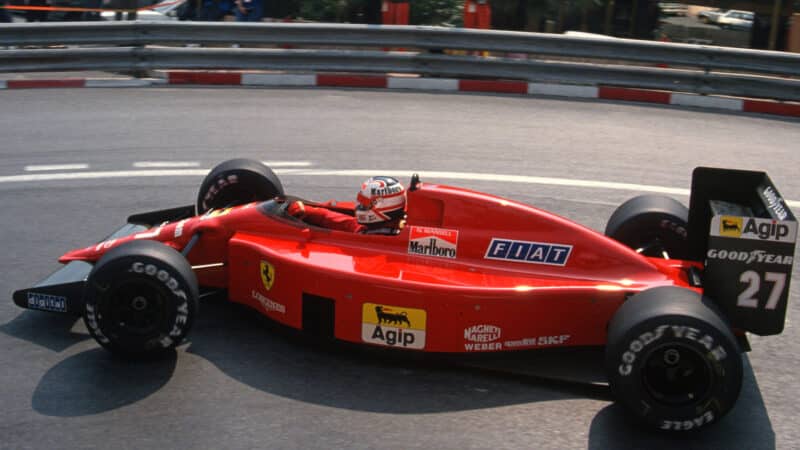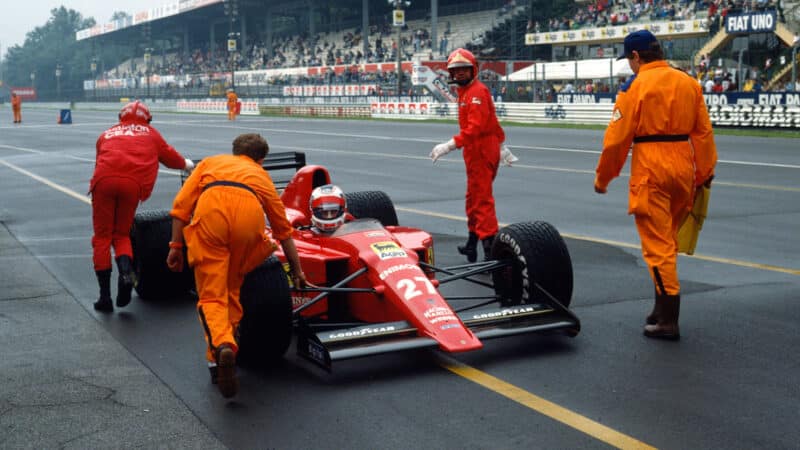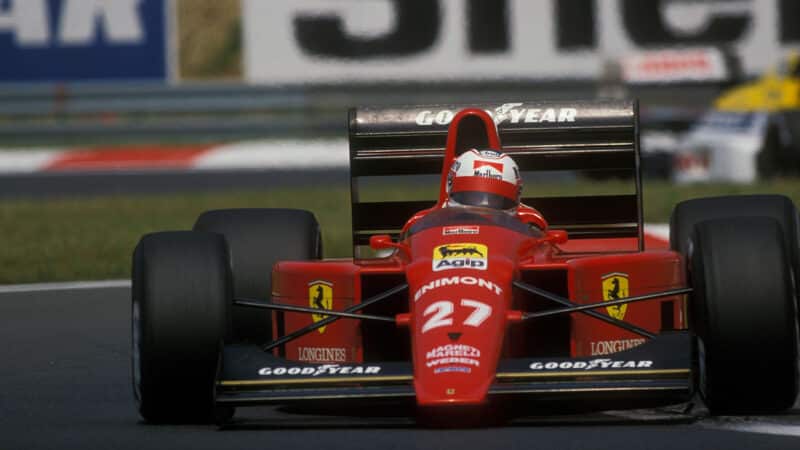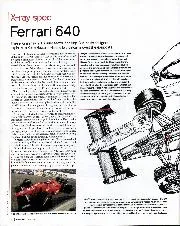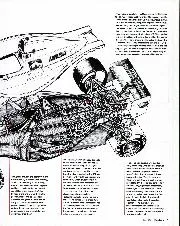“The alternator was driven by a belt from the crank and this kept falling off. It took a long time to find out why, using high-speed photography on the dyno.
“At this time the V12 only had a four-bearing crank which started to whip at certain revs, causing the front pulley to shed the belt. The alternator would stop and so would the gearbox electronics.”
Prospects started to look up from mid-season, with another famous win for Mansell in Hungary and team-mate Gerhard Berger topping the podium in Portugal.
The inherent Ferrari politics all became too much for Barnard though, who decided to leave the team at the end of the season, but his ideas are still evident in the F1 cars of 2023.
“Effectively, it was trying to do what they do today,” he said. “The paddle shift, the torsion bar, the closed-in bodywork around the back that you still see now is, in my opinion, a development of the 640.”
Our limited edition 2024 Motor Sport 100 Years calendar is now available from the Motor Sport shop.
